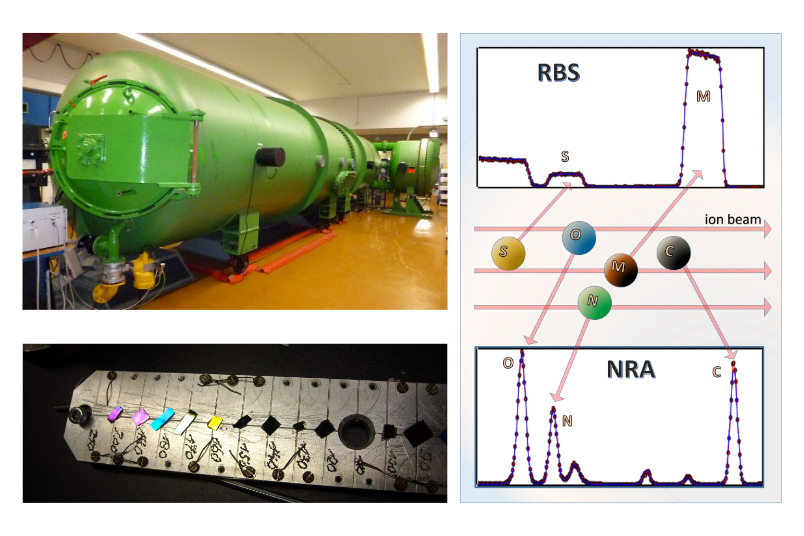- Ruhr-Universität Bochum

Ion Beam Analysis in RUBION
Ion beam analysis (IBA) is a group of analytical techniques based on the detection of charged particles or photons emitted by the bombardment of a sample with high-energy ions. All IBA techniques are characterized by unique features, such as high accuracy and sensitivity, while simultaneously allowing the least-destructive and standard-less quantitative analysis in near–surface layers of samples of interest to many disciplines such as chemistry, biology, geology and archaeology. Hence, IBA is widely recognized as a strong, interdisciplinary field that utilizes Nuclear Physics knowledge and expertise in Materials Science. The central unit of the Ruhr-University Bochum RUBION has an accelerator facility which is equipped for the application of almost all IBA techniques, namely RBS, NRA, NRRA (NRA in the presence of strong, narrow resonances in particular for hydrogen detection), PIXE (Particle-induced X-ray emission) and PIGE (Particle-induced γ-ray emission). In collaboration with various institutes of RUB and other universities in Germany and abroad, IBA and particularly RBS and NRA measurements are performed for the characterization of different kinds of samples – thin films of few nm or thick specimens of µm, in-depth homogenous or layered ones.
Depending on the elements under investigation and the sample matrix, either RBS using 2 MeV alpha particles or NRA with 1 MeV deuterons is employed. These ion beams are provided by the 4 MV tandem accelerator (Fig. 1). In most cases, however, the application of both techniques is necessary for the analysis of a single sample, since these techniques are often complementary. As Figure 2 illustrates, RBS is ideal for probing of heavy elements in light or medium-Z matrices, while NRA is the most suitable one to detect the light elements, even if they occur in high- or medium-Z matrices.
Typical sample materials for which these techniques are particularly suited for the investigation of its stoichiometry are thin films deposited on substrates like Si wafers (Fig. 3). Layers of metal oxides, carbides, or nitrides as well sulfides are the most frequently measured materials. The following small selection of materials analysis demonstrates the possibilities of the techniques provided by RUBION. In a recent work on CVD Grown Tungsten Oxide for sensing applications RBS together with NRA was utilized to determine the thin film thickness and composition [1]. Another example is a study of cesium lead bromide perovskites as light emitting material. For the sample characterization RBS made the contribution of the molecular ratios of the thin films [2]. In the case of material libraries produced by a reactive magnetron codeposition process, the oxygen content of La-Co-O thin-film libraries were investigated using a 4He ion beam with an energy of 3 MeV [3].
References:
1 Wilken, M., et al., Small 2023, 19, 2204636
2 Pourdavoud, N., et al., Adv. Mater. 2019, 31, 1903717
3 Piotrowiak, T.H., et al., Adv. Eng. Mater., 25: 2201050.
